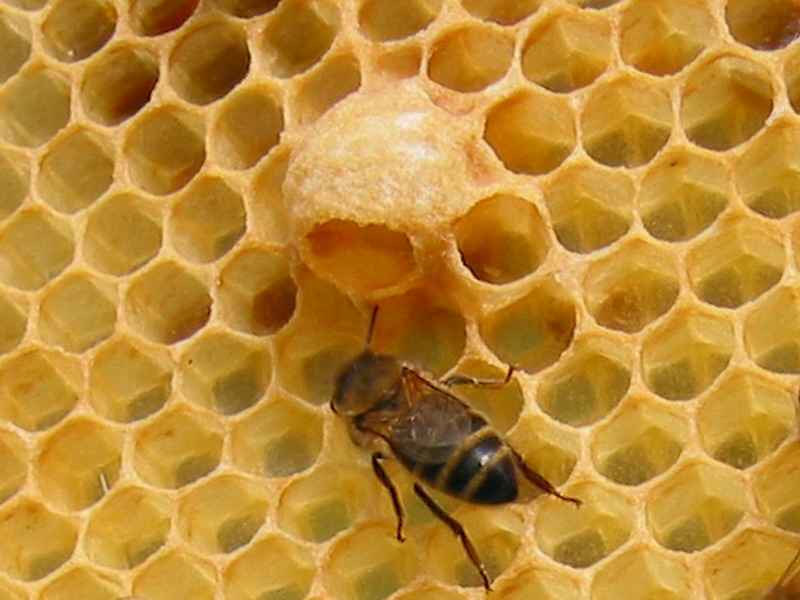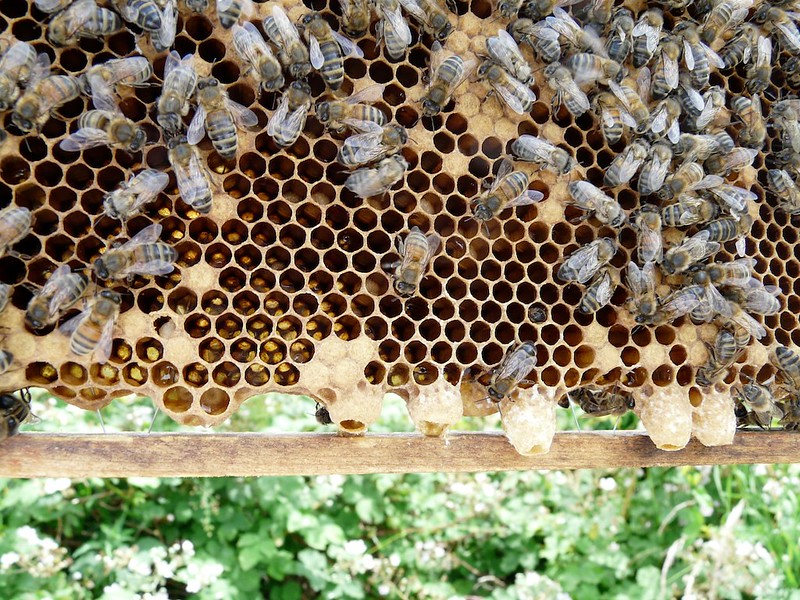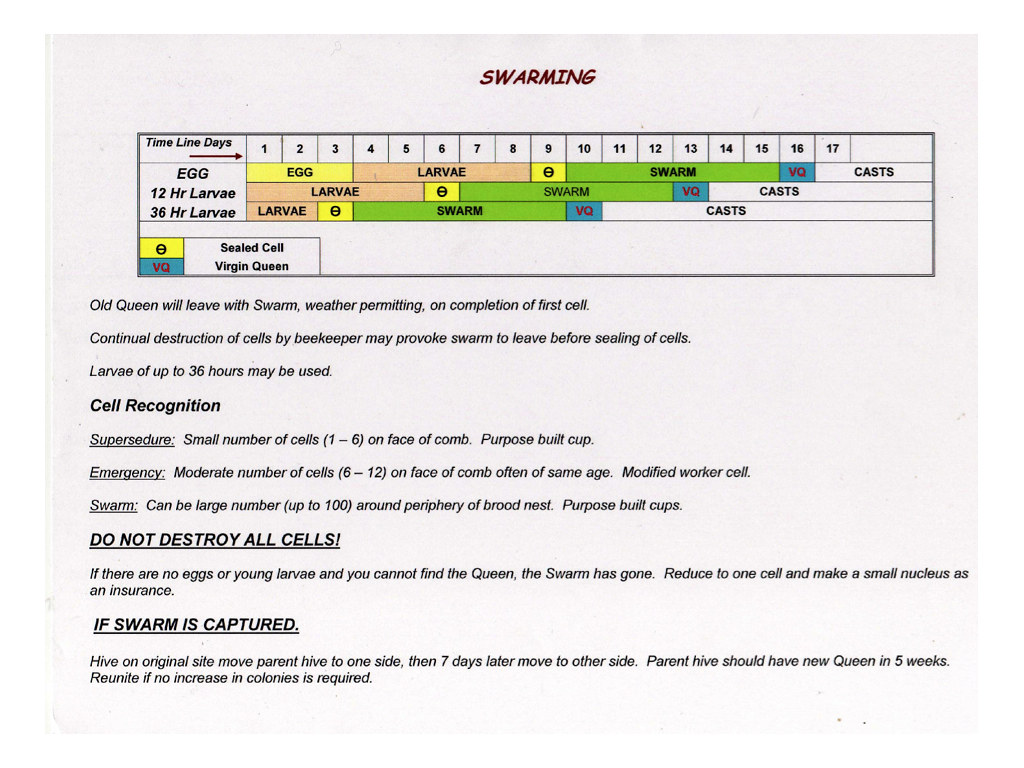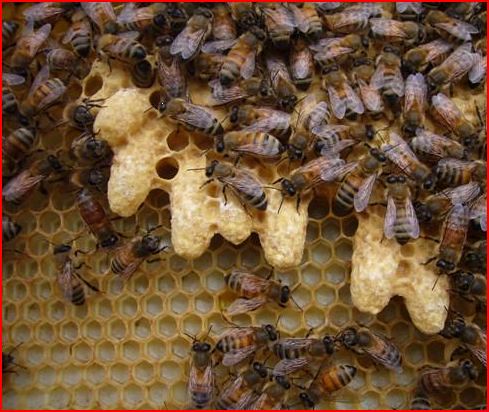-

Ok, so we know what swarming is, when it's likely to happen and what sort of conditions we're looking for so I want to try and look at in more detail what we're looking for when we inspect a colony for signs that they're preparing to swarm.
Play Cup
Before we do any of that though, I want to talk about play cups.
What's a play cup? It's a potential queen cell. It looks kind of like an Acorn cup and you'll often find them when inspecting a hive, they can crop up all over the place and will look something like:

What you can't see from the photo, unfortunately is the bottom of the cup, which is empty. On it's own this is NOT an indication that a colony is preparing to swarm. When I first started I used to knock these down, nowadays I tend to leave them in place. If you knock them down they'll just make more and probably in different places so you spend every inspection finding play cups in different locations to last time all still empty.
But you should check them anyway, just to make sure. Sometimes bees like to mess with you, especially if you're new to beekeeping 
So you're into April/May, maybe even June. Your colony is building up nicely, your brood box is all drawn, perhaps you've got 7-8 frames of brood, you've stuck a super on nice and early to give them lots of space and you're inspecting on a weekly basis. During each inspection you should be looking for signs that they're thinking of swarming. The easiest thing to look for are queen cells.
It might be an obvious point to make, but trying to see queen cells looking at frame that looks like this:

Isn't going to be easy. At time of writing I have a colony not far off looking like that in terms of numbers and you'd better believe that I'm looking closely for queen cells.
So you need to get the bees off the frames. When I inspect I take out the dummy board and the next frame and put them to one side, this gives me plenty of room in the brood box to give the frame a short, sharp shake. You don't need to get every bee off the frame, but you need to be able to inspect the combs.
What are you looking for?
Here's one of mine from a couple of years ago, I think this is a fairly typical pattern on a frame of queen cells for a colony preparing to swarm:

Don't just look at the bottom of frames though as most of the advice suggests (see below). In my experience they will build swarm cells anywhere that there are gaps in the comb so on the bottom, up the sides, in that big hole that happened when they gummed two frames together.
How do I know they're thinking of swarming? Some of them are no more than play cups after all.
Look in them, if you see this:

They're serious about swarming.
At this stage the existing queen is still in the hive.
I think this is a good point to talk about the swarming timeline and thankfully I have an image for that.

The first line is the most important, that's what happens under normal situations. The second and third lines are to illustrate the answer to the question "What happens if I just keep removing queen cells as part of swarm control?". Under Duress, for want of a better word, your bees will use a larvae to raise a queen and your hive will swarm in between a 7 day inspection period. Just cutting out Queen Cells is NOT managing swarming.
I'm going to go out on a limb and suggest that if you see a larvae like the one above, on the right, you could assume as a rough idea that your bees started to make queen cells pretty soon after your last inspection (assuming 7 day inspections). That is not a young larvae at least, it's big and fat and can't be more than a couple of days away from being sealed. That is the critical point when managing swarming. Depending on the weather, as soon as the first queen cell is sealed, the colony will swarm. In the context of an inspection, the cell on the left is unimportant, it's a smaller, younger larvae. If those are the only two cells in the colony, it's when the one on the right is sealed that will determine when the colony swarms.
And for completeness, once you have sealed queen cells:

Your colony will almost certainly have swarmed. Before we get to the next stage there is one important message:
Don't Panic
Put the hive tool down, put the crown board on and take a deep breath. I have the left next section until last for a reason.
Last edited by Neils; 20-05-2012 at 10:24 PM.
Tags for this Thread
 Posting Permissions
Posting Permissions
- You may not post new threads
- You may not post replies
- You may not post attachments
- You may not edit your posts
-
Forum Rules













 Reply With Quote
Reply With Quote

Bookmarks